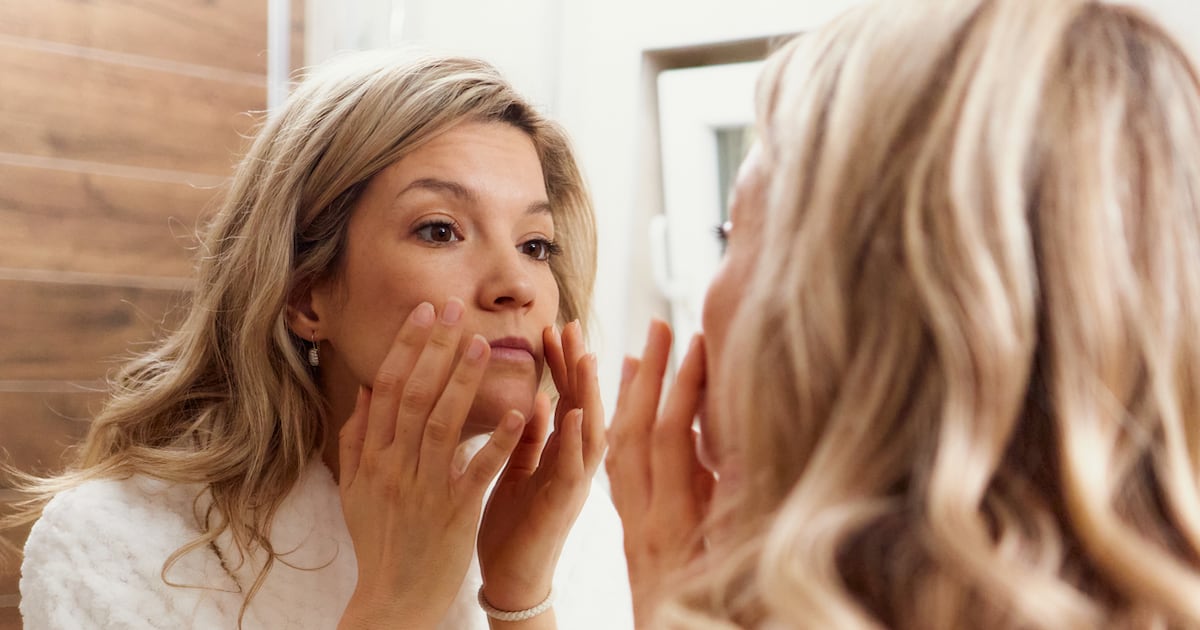
A recent study published in the scientific journal Cosmetics found that combining oral probiotics with topical ectoin and sodium hyaluronate significantly improved visible signs of skin aging.
Over the course of eight weeks, researchers tracked changes in hydration, elasticity, radiance, and wrinkle depth. A cohort of 96 participants took a daily probiotic blend (Lactiplantibacillus plantarum PBS067, Limosilactobacillus reuteri PBS072, and Lacticaseibacillus rhamnosus LRH020) while applying a topical serum and cream containing ectoin and a multi-weight hyaluronic acid compound.
We spoke to lead study author Vincenzo Nobile, R&D Director at Complife Italia, for his insights and key takeaways.
Early and sustained effects
The study showed quick effects, said the researchers, with a 9.2% reduction in wrinkle depth, a 16.6% increase in skin hydration, and a 19.1% increase in skin radiance reported just one hour after applying the cream.
These early results continued to improve over the following weeks. By the end of the study, participants using both the supplements and topicals saw “reductions in the wrinkle depth, transepidermal water loss (indicating an improved skin barrier function and condition), protoporphyrin distribution (associated with impurity removal), and skin sebum content,” along with noticeable gains in smoothness, elasticity, radiance, and firmness.
“Our findings clearly demonstrate the efficacy of probiotic intake combined with topical ectoin and sodium hyaluronate in enhancing skin health and mitigating the signs of skin aging,” stated the researchers.
Microbiome-linked mechanism
One of the study’s central findings was the role of the microbiome. Participants who used both the supplement and topical products showed increases in certain bacteria tied to healthier, more youthful-looking skin, such as Proteobacteria, Cutibacterium, and, in the gut, Gemella.
According to the report, “the increased relative abundance of Gemella, Cutibacterium, and Acinetobacter that we observed in the active groups has been associated with attributes of younger skin,” suggesting a strong link between microbiome support and skin appearance.
Lead study author insights
In an interview, Nobile described the results as demonstrating “an accelerated benefit in enhancing skin appearance,” noting that “the improvement in wrinkle depth at week four with the combined treatment was comparable to the effect seen with single treatments at week eight.”
He emphasized the impact on barrier function and hydration: “Skin moisturization increased by approximately three times compared to the placebo group… this enhanced hydration was linked to improved barrier function, as reflected by a 5.8-fold greater decrease in transepidermal water loss (TEWL) versus placebo.”
The treatment also “respected the natural skin microbiome, with an observed increase in Cutibacterium, a genus associated in scientific literature with characteristics of younger skin,” he added.
Industry implications
The findings may inform new product development in the cosmetics and dietary supplement sectors. Nobile explained that the results “reinforce the growing trend toward integrated ‘inside-out’ skincare solutions” and highlight the “potential for preventive, pro-aging strategies that is particularly appealing to younger demographics seeking to delay the onset of visible signs of aging.”
He added that the study paves the way for multidisciplinary, science-driven skin health solutions that bridge dermatology, nutrition, and cosmetic science.
Limitations and considerations
While the results are promising, the study authors acknowledged some limitations. The study sample included only Caucasian subjects aged 45–65 with mild to moderate facial aging, which may limit generalizability. In addition, the study did not include a post-treatment follow-up to assess the persistence of effects after product discontinuation.
Despite these limitations, the study’s design and integration of objective skin assessments and microbiome analysis provide a strong foundation for further research and product innovation in the well-aging market.
As Nobile concluded, these results indicate that inside-out beauty “is more than a trend…it’s a movement toward precision, prevention, and long-term balance,” and represents “a new era in skin health where consumers are taking a proactive role in their overall wellbeing… becoming the new standard for those seeking genuine, lasting transformation.”
Source: Cosmetics, 2025, 12, 34. doi: 10.3390/cosmetics12020034, “Skin Antiaging and Skin Health Benefits of Probiotic Intake Combined with Topical Ectoin and Sodium Hyaluronate: A Randomized, Double-Blind, Placebo-Controlled Trial.” Authors: V. Nobile, et al.

